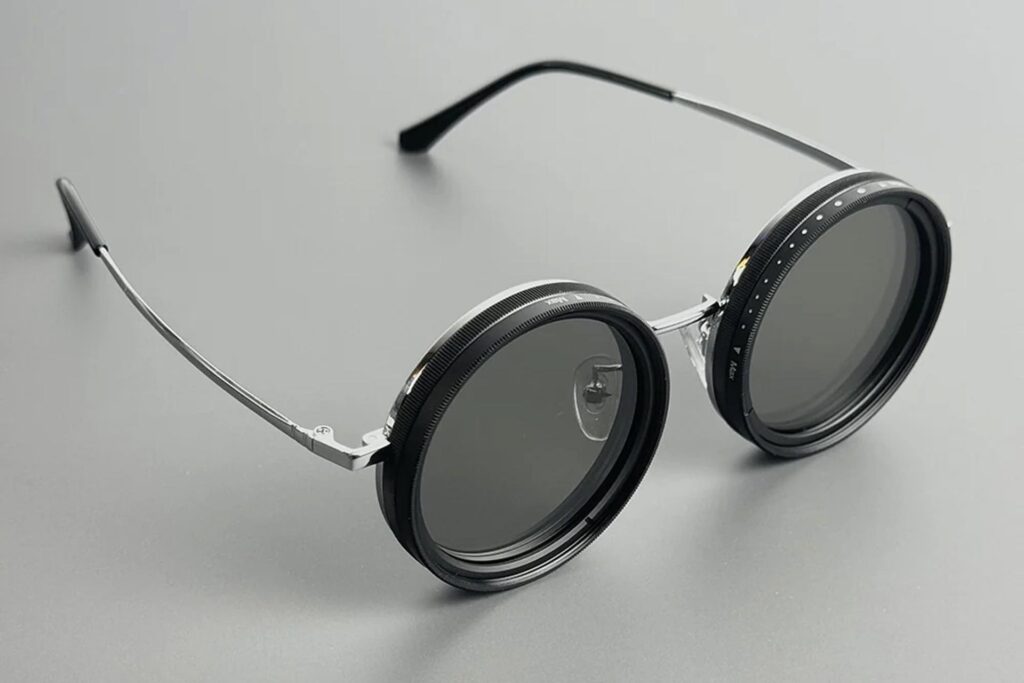As technology continues to integrate into everyday products, sunglasses have not been left behind. Adjustable-tint sunglasses, which utilize photographic filter technology, represent a new frontier in eyewear. Unlike traditional sunglasses, these advanced models allow wearers to change the tint intensity of their lenses, adapting to varying light conditions and offering an optimal visual experience. Inspired by photographic filters, this technology is revolutionizing how people protect and enhance their vision.
Adjustable-tint sunglasses bring convenience, innovation, and customization to eyewear, appealing to outdoor enthusiasts, athletes, and everyday wearers alike. This article explores the mechanics of this technology, its benefits, applications, and its broader implications for the future of eyewear.
The core technology behind adjustable-tint sunglasses lies in the use of photographic filters as lenses. Photographic filters are traditionally used in cameras to adjust light exposure and color balance, allowing photographers to capture optimal images in various lighting conditions. By applying similar principles, adjustable-tint sunglasses can modulate the amount of light entering the lenses, enhancing visibility and comfort for the wearer.
Photochromic Lenses: Photochromic lenses are coated with special molecules that react to ultraviolet (UV) light. When exposed to UV rays, these molecules undergo a chemical reaction that darkens the lenses, blocking excess light. In the absence of UV light, the molecules revert to their clear state, allowing more light to pass through. This technology is seamless and automatic, adjusting to ambient light conditions within seconds.
Electrochromic Lenses: Electrochromic lenses, on the other hand, allow the wearer to manually control the tint level. By applying an electric current to the lenses, wearers can adjust the level of tint from light to dark at the press of a button. This type of lens offers more control and flexibility, making it ideal for activities that require quick adaptations to changing light, such as driving or outdoor sports.
Both types of lenses are designed to provide enhanced clarity, reduce glare, and protect against harmful UV rays. The integration of photographic filter technology makes these sunglasses highly responsive to light changes, offering a customized experience that standard sunglasses cannot match.
Enhanced Comfort and Convenience: The ability to adjust the lens tint allows wearers to avoid squinting or straining their eyes in bright conditions. Photochromic lenses adjust automatically, which is ideal for those frequently moving between indoor and outdoor environments. Electrochromic lenses allow for on-demand adjustments, catering to individual preferences and needs.
Protection Against UV Rays: Both types of adjustable-tint sunglasses offer UV protection, filtering harmful rays that can damage the eyes. Photochromic lenses respond directly to UV exposure, ensuring that the darker the tint, the greater the protection.
Versatility for Various Activities: Adjustable-tint sunglasses are especially beneficial for outdoor enthusiasts, athletes, and people who drive regularly. For example, mountain bikers and runners may encounter diverse lighting conditions in shaded forests and open fields. Electrochromic lenses allow for quick adjustments without stopping, making them a practical choice for activities that demand focus and adaptability.
Reduced Eye Fatigue: By filtering light according to conditions, these sunglasses reduce the strain on the eyes, especially during prolonged outdoor exposure. This feature is particularly valuable for people with light sensitivity or those who spend extended periods in the sun.
Enhanced Contrast and Clarity: Some adjustable-tint sunglasses come with polarization, which helps reduce glare from reflective surfaces like water or pavement. This feature enhances contrast and clarity, making them ideal for water sports, skiing, and driving.
Athletes and Outdoor Enthusiasts: For athletes and adventurers, the ability to adjust lens tint on the go is a game-changer. Runners, cyclists, hikers, and mountain climbers can encounter rapidly changing light conditions, from shadowed trails to open sunlit landscapes. Adjustable-tint sunglasses allow them to maintain optimal visibility without interruption.
Drivers and Pilots: Changing light conditions can make driving or piloting challenging, as shifts in brightness and glare can impair vision. With electrochromic lenses, drivers and pilots can adjust the lens tint based on the weather, time of day, or level of sunlight. The technology reduces the risk of glare-related accidents, making driving and flying safer and more comfortable.
Everyday Users: Even casual wearers benefit from the flexibility of adjustable-tint sunglasses. People who frequently move between indoor and outdoor spaces find the convenience of auto-tinting lenses especially valuable, as they eliminate the need to switch between regular glasses and sunglasses. The technology is also beneficial for people with eye conditions that cause sensitivity to light.
People with Light Sensitivity: Adjustable-tint sunglasses are valuable for individuals with photophobia (light sensitivity) or other eye conditions that make certain lighting uncomfortable. The ability to modify the lens tint provides relief from bright lights and reduces the risk of eye strain or migraines.
Photographic filters, traditionally used in cameras, are designed to modulate light and enhance contrast, qualities that make them ideal for eyewear applications. By adapting these filters to sunglasses, manufacturers have created lenses that control light without compromising visual clarity.
UV Absorption: Like camera filters, these lenses can absorb specific wavelengths of light, particularly UV rays, which are harmful to both cameras and eyes.
Tint and Saturation Control: Just as filters help photographers manage exposure and color in images, adjustable-tint sunglasses use similar principles to regulate brightness and enhance contrast, making outdoor scenes more vivid.
Durability and Clarity: Photographic filters are engineered to provide sharp, undistorted images. Applied to sunglasses, this technology ensures wearers experience high clarity, even when tint levels are modified.
Battery Life and Power Efficiency: For electrochromic sunglasses, battery life is a primary concern, especially for users who require long-lasting power during outdoor activities. Manufacturers are exploring energy-efficient solutions and materials that enable longer use without frequent charging.
Consistency and Speed of Adjustment: The transition speed of photochromic lenses can vary based on temperature, light conditions, and the quality of the materials. Research into faster-reacting compounds is ongoing, as consumers seek lenses that adjust instantly to changing conditions.
Durability and Scratch Resistance: Sunglasses endure a lot of wear and tear, so durability is essential. New coatings and materials are being tested to improve scratch resistance and ensure the lenses remain clear over time.
Precision in Light Adjustment: For electrochromic lenses, precision control of light levels remains a challenge. Technology must ensure that adjustments are smooth, accurate, and consistent across different lighting conditions.
Sustainability is increasingly important in product design, and adjustable-tint sunglasses are no exception. Manufacturers are exploring eco-friendly materials for frames and lenses, as well as recyclable batteries for electrochromic models.
Eco-Friendly Materials: Biodegradable plastics and recycled materials are being used for frames, reducing the environmental footprint.
Sustainable Energy Sources: Some manufacturers are exploring solar-powered electrochromic sunglasses, reducing the need for external charging and making them more sustainable.
Longevity and Reduced Waste: Adjustable-tint sunglasses can replace multiple pairs of sunglasses with a single pair, reducing the need for multiple products and thus lowering waste.
Adjustable-tint sunglasses are at the forefront of eyewear technology, and their potential is only beginning to be realized. Future developments could include:
Integration with Smart Technology: Future models could integrate with smartphones, allowing users to control tint levels via an app. This integration might also enable users to adjust tints based on GPS data or weather forecasts.
AI-Driven Tint Adjustments: AI could enable the sunglasses to analyze light conditions in real-time, adjusting tint more accurately based on environmental factors like cloud cover or changing angles of sunlight.
Customized Lenses for Different Conditions: Future sunglasses may offer customizable lenses tailored to specific activities, such as skiing, cycling, or fishing, enhancing performance in each environment—
No comments yet.







